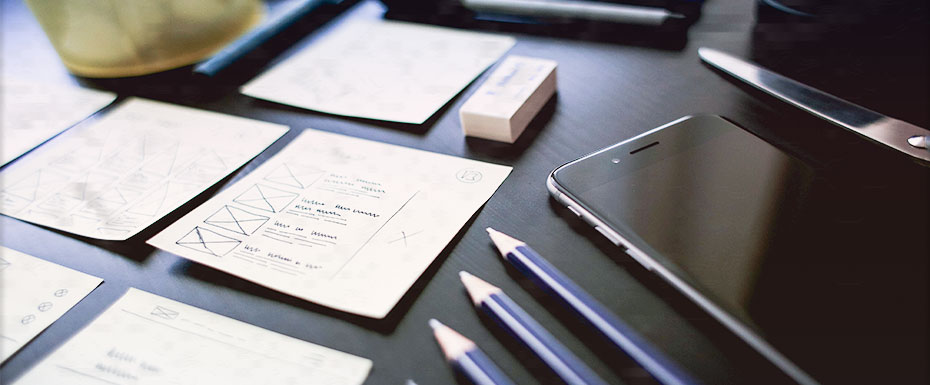
Illustrations are an indispensable means of communication for humanity. About 45,000 years ago, they originated in the form of rock paintings and are still used to depict various objects and concepts.
Images are not afraid of language barriers, and the level of education of a person is not important. Illustrations help people understand and express complex moods and feelings that they cannot convey in words. Remember, when you were little and did not know how to read, illustrations made it possible to learn many interesting stories from children’s books.
In the context of modern information technology, an illustration is partly a decoration and partly an emotional signal that helps make a remarkable impression on the user with the help of an embedded metaphor.
Why Use Illustrations on the Site?
Illustrations are a valuable means of communicating the mood, tone, or voice of a brand.
But don’t confuse icons and illustrations just because they are images. Icons are symbols that most often need to match the illustrations stylistically. A symbol is a simplified representation of an object, idea, or action. For example, such action as “search” is usually denoted by a magnifying glass.
As far as illustrations are concerned, they are capable of conveying much more complex concepts. In particular, they create an emotional connection with the intended audience. Also, illustrations do a great job of revealing the meaning without the need to add text. When used correctly, illustrations give individuality to even the most basic and practical website.
Popular Types of Illustrations on the Web
The styles of illustrations vary from simple outlines to detailed, full-color, and lifelike images. Also, there is no limit to the number of graphics used on the site.

Each style evokes certain emotions and responses, so it is crucial to choose an illustration style consciously. First of all, you should rely on the purpose of the site and what kind of character you want to give it.
You can research the market and see which type of illustrations best suits your product. Let’s take a look at how different designers manage to effectively use illustrations in four categories.
Finance and Corporate Websites
Financial services, fintech, corporate applications, and large corporate websites most often use illustrations as a way to humanize themselves.
These organizations maintain a minimalist style, using simple forms and few illustrations. For instance, Acorns’ first screen illustration uses a simple oak leaf motif combined with the Acorns’ logo. The rest of the illustrations are also made in green corporate shades.
The design of the site creates a typical new-company feel (Acorns was founded in 2014). It is what many web-based brands in finance look like.
More mature and traditional organizations use illustrations for the same purposes. However, the areas of use of illustrations may be limited, as is the case with Danske Bank. The design emphasizes product availability with illustrations in the “About us” and “Sustainability” sections.
Visa is also limited to the use of illustrations in a specific area. An example of this is the design of the Visa Direct section. As a result, the new service stands out from everything that Visa has to offer.
Another approach that is gaining popularity in this category is abstract graphics. Abstractions are especially useful when it is difficult to show what the site has to offer. For example, Instabase uses compositions of geometric shapes to generate interest.
One of the key points of using illustrations on this type of site is to strike a balance between friendly, human, accessible, and at the same time serious, reliable, and safe. If you lean on the side of playfulness, potential clients won’t take you seriously.
Food and Drink

It’s a bit freer when it comes to food and drink. Styles are much more varied, and the image can be more expressive and individual. Some still prefer the subtle spice of illustrations, with emphasis on aspects such as color and type. Other sites in this category make illustrations a much more significant part of the design.
Hotel Industry and Leisure
In this category, users are more eager to see photographs, but illustrations can help as well. A photograph can only show what something looks like, while an illustration can convey the emotions associated with a potential experience.
For instance, Comptoir Libanais combines photographs with illustrations to create a distinct personality. Hotel Frida has character, too, and fantastic Victorian animal illustrations make the brand uniquely original. Highcourt uses simplified and stylized illustrations that give a complete picture of the building’s interior than a photograph would.
Conscious Web Design
Websites promoting environmentally responsible companies, natural skincare products, natural or organic food and drink, vegan products, social responsibility, and more tend to rely on illustrations, especially if they are relatively new.
Quite often, this is done in the form of drawings of plants, which unpretentiously hint at nature. In addition, illustrations are often used to introduce information so that users do not perceive it as lecturing.
Many brands for children use illustrations, even if the target is adults and not children. Little Yawn Collective combines a child-friendly approach with illustrations of sleeping animals and a natural product.
Use of Illustrations on Websites
Illustration can be a powerful tool in a designer’s arsenal, but it can be difficult to present correctly. This is because illustration evokes emotion, and emotion is subjective.
Just like font or color, illustrations need to be handled correctly and carefully. Remember that sometimes less is more. It also happens that incorrect placement of an excellent illustration can lead to failure.





